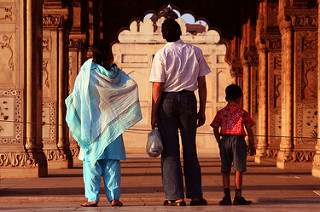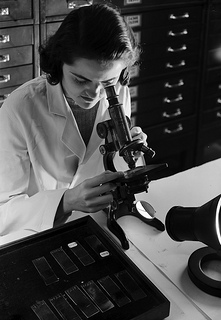
Photo credit: iwishmynamewasmarsha / Foter / CC BY-NC
The more Indians who read this information, and act on it, the safer will all Indians be from leprosy (a curable disease). Otherwise as many as 300,000 Indians will unnecessarily become deformed by leprosy during the next decade. This is owing to inadequate monitoring of their nerves and delayed anti-inflammatory treatment.
Specific solutions are possible.
This information is available in several languages. Click a link below for the pdf file. For the web version (English), scroll down.
The short link for this webpage is:
Social sharing buttons are at the end.
Various languages (pdf files)
English How to protect yourself from leprosy
Hindi How to protect yourself from leprosy
Chhattisgarhi How to protect yourself from leprosy
Odia How to protect yourself from leprosy
Bangla How to protect yourself from leprosy
Telugu How to protect yourself from leprosy
Marathi How to protect yourself from leprosy
Gujarati How to protect yourself from leprosy
Tamil How to protect yourself from leprosy
Kannada How to protect yourself from leprosy
Malayalam How to protect yourself from leprosy
Punjabi How to protect yourself from leprosy
How to protect yourself from leprosy
Joel Almeida, PhD, MBBS
Leprosy is a curable disease caused by a germ. No socio-economic class in India is exempt from leprosy. It is important for you to understand leprosy and how you can protect yourself from it.
 Photo credit: Wen-Yan King / Foter / CC BY-NC-SA
Photo credit: Wen-Yan King / Foter / CC BY-NC-SA
A new leprosy case is currently found every few minutes, among children and adults in India. That is good, because it enables treatment to be started before the person becomes disabled. Claims that leprosy has been eliminated from India are completely mistaken, and dangerous to your health. The WHO in a 2013 report clarified, once and for all, that elimination means zero new cases in a defined area.
 Photo credit: Francisco Anzola / Foter / CC BY
Photo credit: Francisco Anzola / Foter / CC BY
Over 1 million more Indians are likely to develop signs of leprosy during the next decade. If you live in an Indian city, think of 25 big buildings around your home: they probably have 1,000 people. That’s enough to produce 1 more person with signs of leprosy during the next decade. People who show signs of leprosy are like the tip of an iceberg. Over 20 to 100 million more Indians will be infected during the next decade, but show no signs of leprosy.
 Photo credit: lecercle / Foter / CC BY-NC-SA
Photo credit: lecercle / Foter / CC BY-NC-SA
Leprosy germs which dry in the shade in India can survive for at least 5 months, and still multiply when re-introduced into a host. A rapid decline of new leprosy cases, over 10% per year, occurred in Shandong province of China more than 50 years ago and in Norway more than a century ago: owing to alleviation of extreme poverty. India is different: the number of new cases with visible deformities at diagnosis increased between 2008-9 and 2013-14. Even if you are affluent, the alleviation of extreme poverty in urban slums and rural areas of India is in your own self-interest.
 Photo credit: ReSurge International / Foter / CC BY-NC-ND
Photo credit: ReSurge International / Foter / CC BY-NC-ND
Untreated leprosy can damage your nerves and deprive you of pain sensation. Repeated injuries can then gradually erode your fingers, toes, feet and eyes, causing visible deformities. Muscles in your hand, leg or face can become paralysed as a result of nerve damage. This can make it difficult for you to straighten your fingers, or to raise your toes off the ground when walking, or even to shut your eyelids. It is much better to seek diagnosis and be treated before you suffer nerve damage.
 Photo credit: backonthebus / Foter / CC BY-NC
Photo credit: backonthebus / Foter / CC BY-NC
If you seem to have skin patches which cannot feel the tip of a ball-point pen, or your earlobes seem thickened, or your hands and feet repeatedly suffer painless wounds, or you have trouble straightening your fingers, you should approach your nearest government health centre.
 Photo credit: wallygrom / Foter / CC BY-SA
Photo credit: wallygrom / Foter / CC BY-SA
They should be able to arrange for free diagnosis, and – if necessary – free MDT treatment (multi-drug therapy). If you receive a diagnosis of leprosy, members of your household too should be examined for leprosy. You might all have been exposed to leprosy.
MDT rapidly kills leprosy germs. Within days of starting MDT, even the most infectious types of leprosy become non-infectious. However, MDT is not sufficient to prevent nerve damage.
 Photo credit: miss_leslie / Foter / CC BY-NC-ND
Photo credit: miss_leslie / Foter / CC BY-NC-ND
Serious nerve damage can occur during the first 2 years after starting MDT. This is because your body wages war on the killed germs. This war is known as inflammation. Your nerves become a battleground. Inflammation in nerves is known as neuritis. This internal war can cause permanent damage to nerves, leading to visible deformities. Unfortunately this neuritis is often “silent”: you might remain unaware of it until serious nerve damage has occurred.
 Photo credit: mynameisharsha / Foter / CC BY-SA
Photo credit: mynameisharsha / Foter / CC BY-SA
Skilled and experienced leprosy workers are needed to monitor your nerves every month during the first 2 years after starting MDT. Such skilled leprosy workers were previously available, but premature and mistaken claims of elimination have largely eliminated leprosy services. Skilled leprosy workers would be able detect even “silent” neuritis. You could then receive prompt anti-inflammatory treatment whenever required. This would help protect your nerves and save you from a lifetime of disability. It is better, and cheaper, for the Indian leprosy programme to provide such nerve monitoring, than to allow you to suffer lifelong disability.
 Photo credit: IMs BILDARKIV / Foter / CC BY-NC-ND
Photo credit: IMs BILDARKIV / Foter / CC BY-NC-ND
Treated leprosy patients with visible deformities are generally non-infectious. They are like you in every way, except that their nerves were once invaded by the leprosy germ. Their leprosy germs have long since been killed. Now you can treat them with the same respect and affection which you show to others. It could easily have been you. If you develop visible deformities, reconstructive surgery, rehabilitation and support are available through the Indian leprosy programme and partners. You should claim such assistance.
How you can make a difference
 Photo credit: LucasTheExperience / Foter / CC BY-NC-ND
Photo credit: LucasTheExperience / Foter / CC BY-NC-ND
You can act now to protect yourself and your loved ones against leprosy. You should go ahead and write to your local MP, MLA, panchayat member and corporator, expressing support for the Indian leprosy programme: but urging better anti-inflammatory treatment for the serious nerve damage of leprosy.
You can inform them that:
1) Leprosy has not been eliminated, according to WHO’s authoritative 2013 definition. Instead, over 1 million Indians will newly develop the disease leprosy during the next decade, and the politician’s own family and friends are at risk. Therefore a strong leprosy programme in India benefits everyone.
2) The Indian leprosy programme should provide trained leprosy workers for monthly monitoring of nerves during the first 2 years after the start of MDT treatment. Otherwise each year many thousands of Indians will newly suffer nerve damage and become visibly deformed despite MDT: owing to delayed anti-inflammatory treatment.
You, your family and your friends will be safer because you wrote.
—————————————————————————————————————
This article originated in online discussion among alumni of an Indian medical college. Earlier drafts were shared with the WHO, the International Federation of Anti-leprosy Organisations (ILEP), the Nippon Foundation, the Novartis Foundation for Sustainable Development, the Leprosy Mailing List of leprosy experts from around the world, and groups of public-minded Indian doctors working in various Indian states. Views expressed in the article remain the responsibility of solely the named author.

You must be logged in to post a comment.